
Sony Xperia 1 IV review: amazing cameras, but too hot to handle?
Table Of Contents−
Smartphones have cratered the dedicated camera market and with handsets such as the Sony Xperia 1 IV, it’s easy to see why. This phone has a battery of great cameras, capable of shooting 4K video at a ridiculously smooth 120 frames per second.
You can’t fault the cameras, but once you get past the slick photography, a few cracks emerge. Not least the heat this phone generates.
Pros
- Huge variety of cameras
- Exceptional video performance
- Strong battery life for a powerful phone
Cons
- Alarming warnings about potential overheating
- Screen brightness sensor is wayward
- Erratic fingerprint reader
Related reading: ThinkPhone by Motorola product guide: exclusive video, price and availability
The cameras
You can’t start anywhere else but the cameras with the Sony Xperia 1 IV. If you look at the raw specs, especially the megapixel count, you might be underwhelmed, but don’t be. There’s a hell of a lot of good stuff going on here.
On the rear, there are three lenses to toy with:
- A 12-megapixel f/1.7 24mm main camera
- A 12-megapixel f/2.2 16mm ultrawide camera
- And the star of the show, a 12-megapixel 85-125mm optical zoom lens, that can zoom between 3.5x and 5.2x
(There’s a depth sensor on the back there too.)
Note that’s an optical zoom lens, not the naff digital zoom you normally get on phones, which basically just crops the image. Inside the tiny camera housing, there are mechanical parts moving back and forth, just like a zoom lens would on a full DSLR. It’s not unique to smartphones, but it’s rare.
On the front, there’s another 12-megapixel f/2.0 24mm selfie camera.
Between them, those four cameras provide enormous creative potential. Not least because all four cameras can capture 4K video at 120 frames per second.
Whether you’re going for sweeping wide shots, in-your-face portraits or you’re trying to capture the action from a distance (such as from the stands at a football match), the Xperia 1 IV has a lens for the job. It’s certainly the most versatile set of smartphone cameras I’ve ever played with.
You can see a selection of photos I’ve taken with the various cameras below (yes, I’m quite into football). The full-res images are available to view here and none are edited.

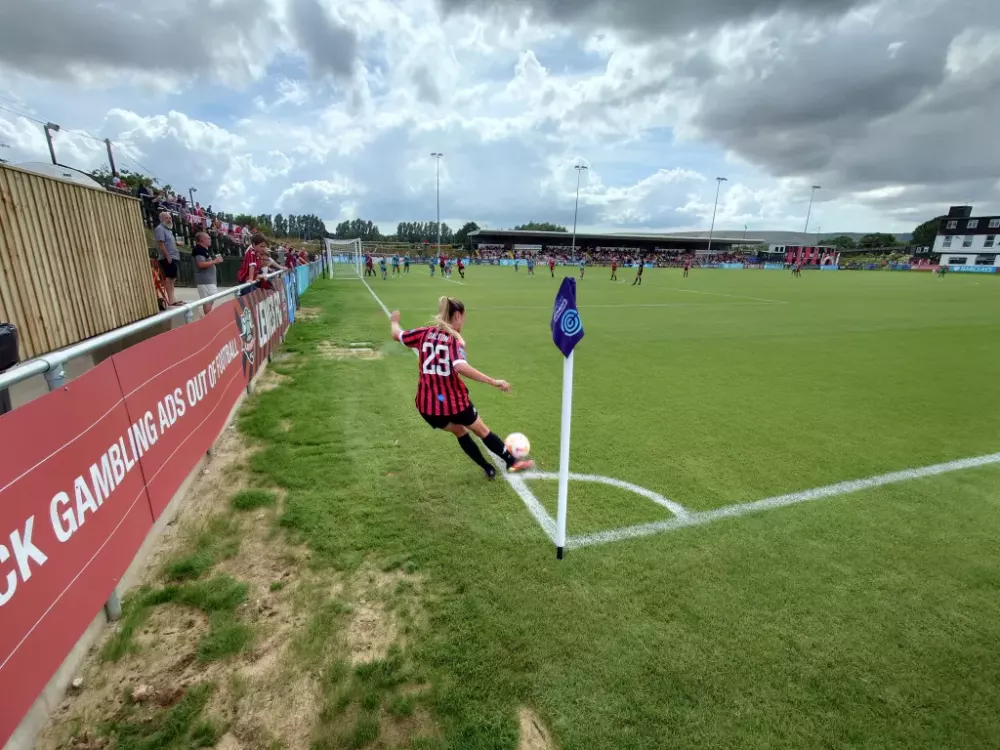
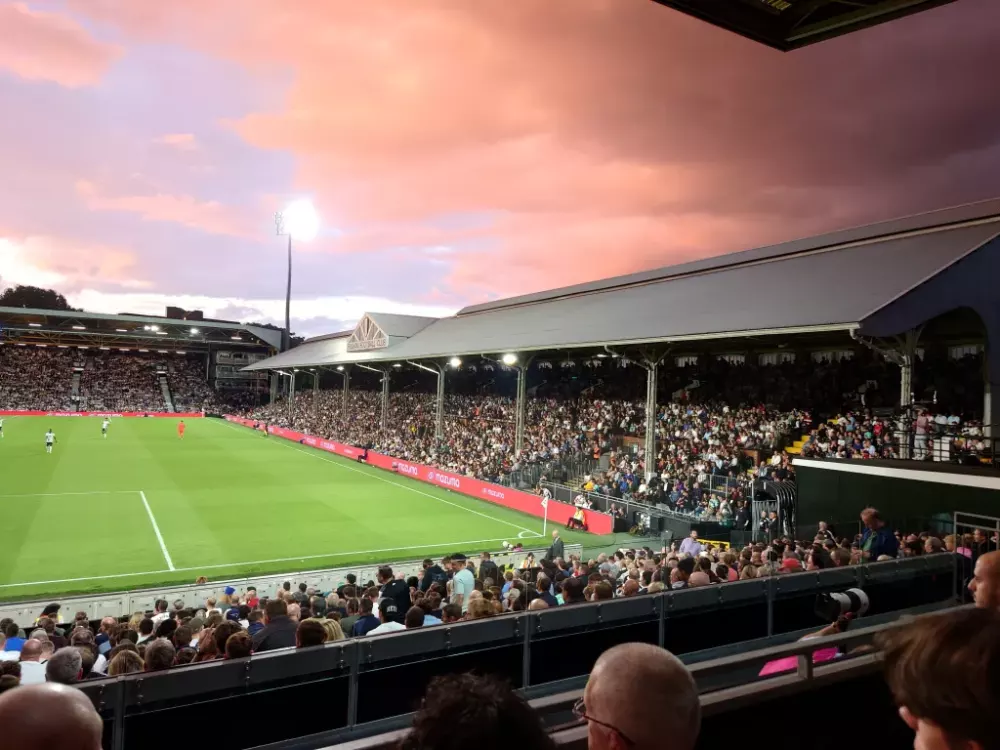

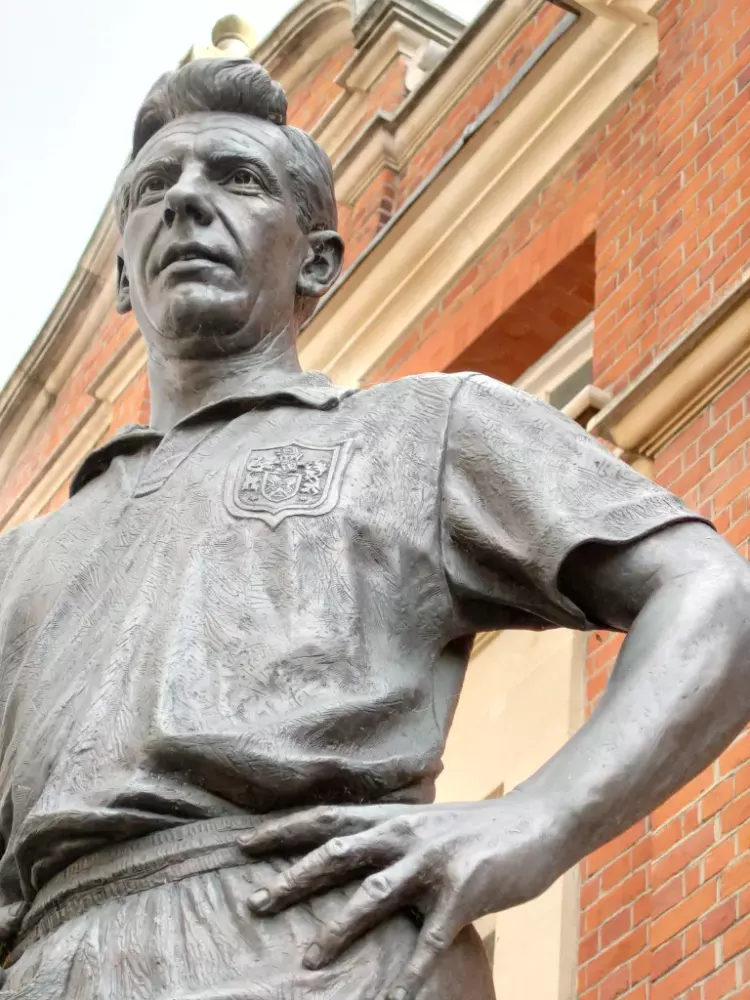
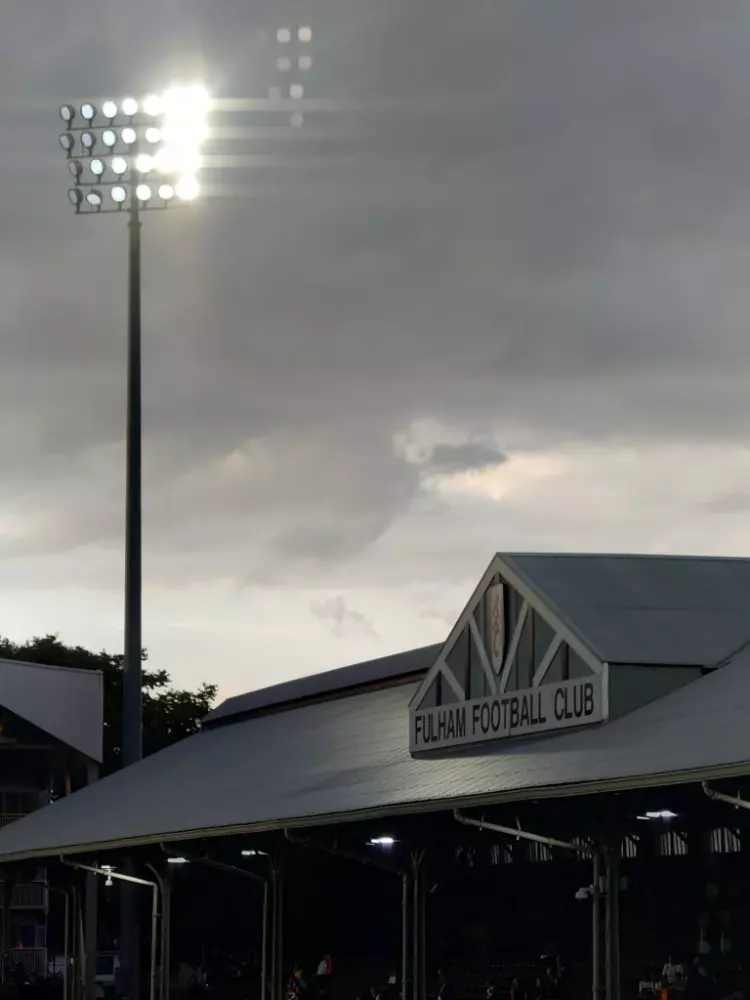
As you can see, even in challenging lighting conditions, the exposures are well-judged and the colours are lifelike and sumptuous. They’re not the most detailed photos I’ve ever seen from a smartphone camera, but I’m almost universally pleased with the results when I take a photo. The phone has a dedicated shutter button, which makes it easier to take photos and avoid motion blur caused by dabbing at the screen.
The video is the real star here, though. It’s hard to show you how great the video is because you’re more than likely not watching on a 120Hz capable screen and streaming services such as YouTube cap out at 60 frames per second. So take my word for it. If you can watch the 4K 120fps second video this phone takes on a suitable screen, it’s awesome (I don’t use that word lightly). The video embedded below was shot at 120fps, but YouTube drops it back to 60fps and it still looks great.
At 120fps, there’s zero motion blur, even when the player spanks the ball, even in the slow-motion sections. Everything is wonderfully crisp, except when the autofocus wanders. It’s a delight.
The photo and video apps
So here’s a little confession. In the football video above, I didn’t mean to stick it in slow-motion midway through. It was a mistake.
That’s partly because the apps that Sony provides for photos and video are pretty complicated. To be fair, this phone is aimed at creative pros, but you need to invest time into learning how to use it properly. There are also two different apps for video: Video Pro and Cinema Pro, while the Camera Pro app can also take video. That seems like at least one app too many.
Cinema Pro is designed more for collating video projects and includes a library of cinematic filters that can be applied to your shots. Video Pro is the day-to-day video shooting app, although why it couldn’t be merged with Camera Pro, I’ve no idea. It has all the manual controls a serious phone videographer could want, but the menus could be cleaner. Quite often I’ve found myself fiddling with settings and missing the thing I was hoping to shoot in the first place.
One last point on apps: the default photo handler is Google Photos, which wants me to take out a Google One subscription to unlock even fairly rudimentary filters such as ‘vivid’ and ‘radiant’. Yes, there are free apps that can do all this stuff, but I don’t expect to pay £1,000 for a phone and then be confronted with a demand for more money to apply basic photo filters.
The screen and audio
The screen on the Xperia I IV is glorious. A 6.5in 4K display that uses OLED technology, which means you’re always going to get a real punch of contrast and blacks as dark as a Nick Cave album.
The screen is in the tall, thin 21:9 aspect ratio, which obviously dictates the shape of the phone. That does, however, mean thick black bars down the side when you’re watching Netflix or other streaming services.
The black bars aren’t the screen’s biggest problem, though. It’s the dynamic brightness. I’ve lost count of the times I’ve pulled the phone from my pocket and struggled to see it because the screen’s too dim, even in darkened rooms. There’s no problem with maximum brightness itself – it’s as bright as the sun when you take manual control – but something’s not right with the sensor, and it often takes a good 30 seconds to correct itself.
Audio from the speakers is bold and punchy, with no tinny rattle at high volumes. There’s a speaker at either end of the phone although to claim stereo separation would be a stretch.
A 3.5mm headphone jack sits at the top of the phone, which is rare these days. However, I did have the odd problem with Bluetooth playback, where sound would occasionally dip in quality like you were suddenly listening to a very low-bitrate piece of audio. (Update: I’ve now tested another handset with updated software and it seems this problem has been fixed.)
Sony also offers a feature called Dynamic Vibration, where the phone buzzes in your hand or pocket in time with the drum beat. Why anyone would want this appalling waste of battery life is beyond me.
Battery life
My fear was that a super-powerful phone like this would drain the battery dry before bedtime, but it’s fine. Credit to Sony for fitting a hefty 5,000mAh battery inside this thing. I got to the end of most days with somewhere between 30-60% of battery left. Certainly, I never left the house worrying about battery life, even when using the cameras heavily during the day.
The problems
Aside from the problems with screen brightness and Bluetooth audio we’ve mentioned, there are other concerns.
The big one is heat. When you first fire up any of the photo or video apps, you’ll get this rather alarming warning:
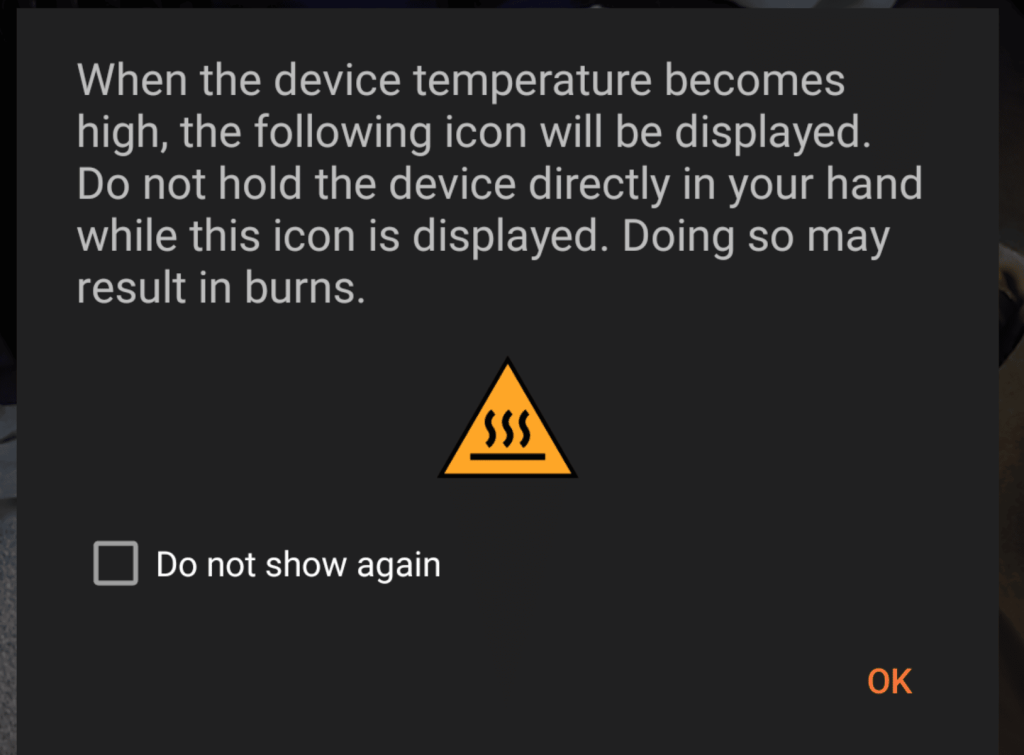
It’s staggering that, in this age of ambulance-chasing lawyers and class-action lawsuits, Sony’s even willing to put out a phone that it warns “may result in burns”.
It doesn’t take an awful lot to trigger that warning, either. After just over three minutes of shooting 4K video at 120fps, I was interrupted by the following screen:
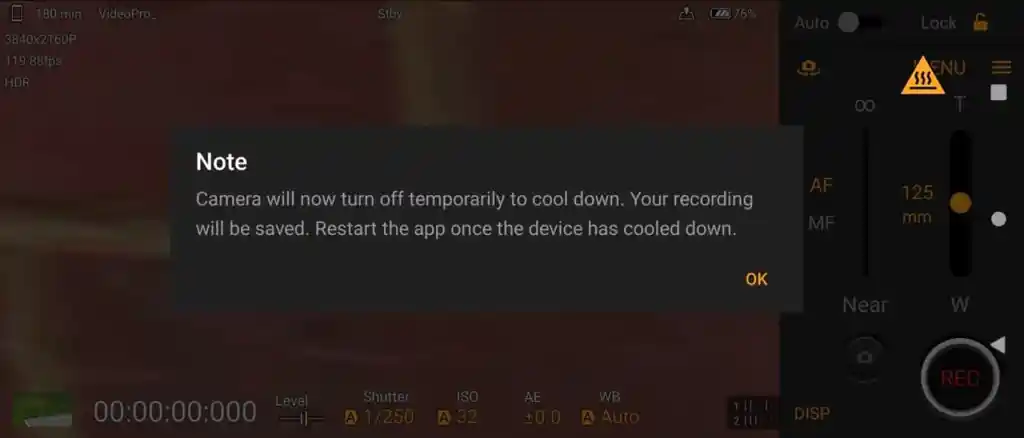
To be fair, although the phone was warm to the touch, it wasn’t too hot to handle. But that’s a poor user experience. If you’re buying this for the ability to shoot top-quality videos, be warned you may be limited to short bursts.
Heat isn’t the only other concern. The fingerprint reader, built into the power button on the side of the handset, is woefully erratic. Around half the time it fails to unlock the phone, requiring a PIN. Once again, if you’re hoping to catch the moment, this kind of thing might get in the way.
Sony Xperia 1 IV review verdict
My unshakeable feeling about the Sony Xperia 1 IV is one of disappointment – disappointment that it’s so good for photographers but has impossible-to-ignore failing elsewhere. The photos and videos it takes are gorgeous, as is the screen and all-black metal design of the phone itself.
I’ve not even discussed some other features pros might adore, such as the ability to link to a capture card or use the phone as a viewfinder on Sony cameras. Or the fact it includes a microSDXC card slot to supplement the supplied 256GB of storage.
But you can’t ignore the heat warnings. You can’t ignore the iffy screen brightness sensor. You can’t ignore the erratic fingerprint reader.
If you’re demanding over £1,000 for a phone, it’s got to be flawless. Sony’s designers should be kicking themselves because they’re a few silly mistakes away from a sensational phone.
NEXT UP

Eight lessons from building an AI product
In 2021, long before ChatGPT, Prashant Mahajan built his own generative AI tool for product managers. Here, he shares his playbook for building an AI product that will stand out from the crowd.

Taavi Tamkivi, Founder and CEO of Salv: “Collaboration between financial institutions, or rather lack of it, has traditionally been a challenge”
We interview Taavi Tamkivi, the Founder and CEO of Salv, a regtech company on a mission to beat financial crime
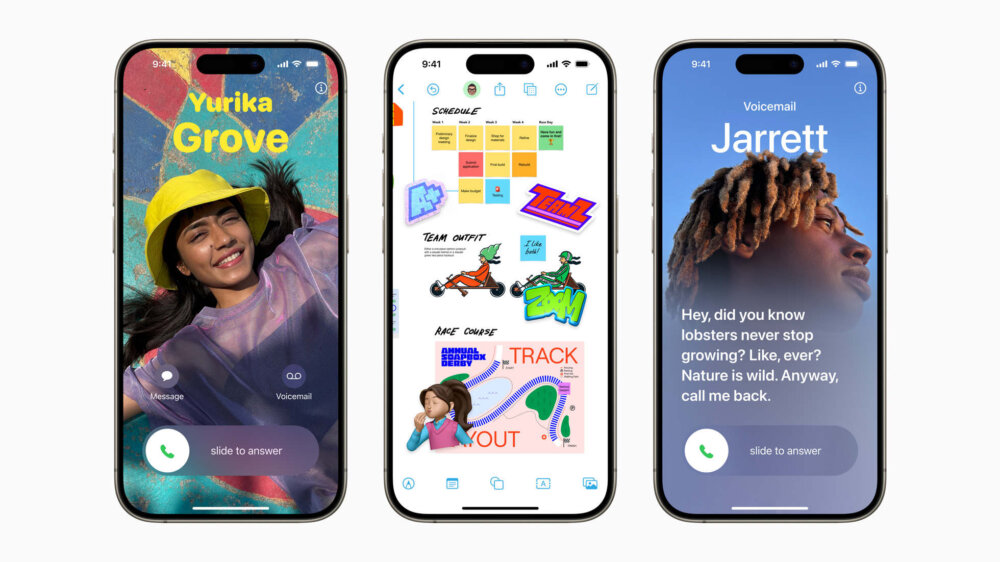
Apple AI iPhones move one step closer with on-device AI experiments
Apple AI iPhones are a distinct possibility with the release of experimental language models that could run easily on a phone